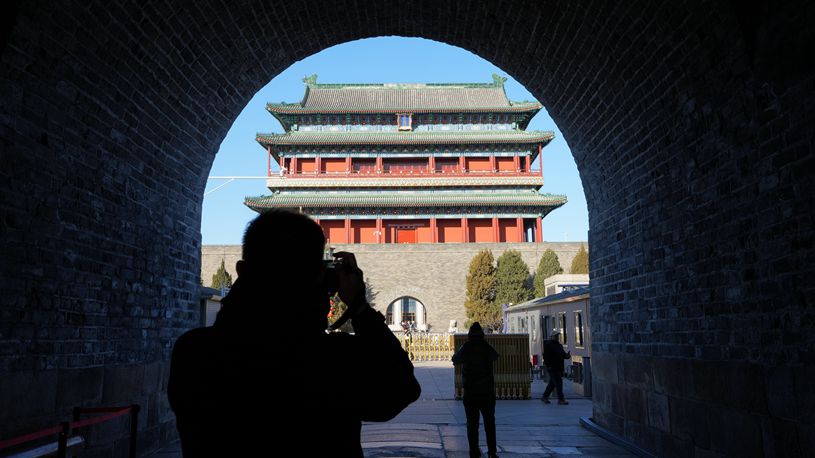Xinhua Headlines: High-altitude highways pave way for prosperity in China's ethnic minority areas
Source: Xinhua
Editor: huaxia
2024-12-26 22:51:48
* More than 70 years ago, the construction of two monumental highways -- the Sichuan-Xizang and Qinghai-Xizang routes -- kicked off.
* Seven decades on, these historic highways have transformed the once-remote plateau. They have spurred economic and social development and brought profound changes to the lives of the people living along their routes.
* In addition to the two main highways, an expansive network of roads built over the decades has connected more and more remote villages, accelerating their development and narrowing the urban-rural divide.
BEIJING, Dec. 26 (Xinhua) -- The Qinghai-Xizang Plateau, often referred to as the "roof of the world," was once considered so inaccessible that "only the mighty eagles of the plateau could fly over."
However, more than 70 years ago, under the leadership of the Communist Party of China, this began to change as the construction of two monumental highways -- the Sichuan-Xizang and Qinghai-Xizang routes -- kicked off. These ambitious projects were no easy feat, with over 100,000 soldiers and civilians from diverse ethnic backgrounds working tirelessly to overcome the region's harsh natural challenges.
Since then, these historic highways have transformed the once-remote plateau. They have spurred economic and social development and brought profound changes to the lives of the people living along their routes.
ROADS CHANGING FATES
For centuries, the Xizang Autonomous Region had no formal roads connecting it to the country's inland regions, with transportation relying solely on manual labor and pack animals.
Gao Ping, a veteran who participated in the construction of the Sichuan-Xizang Highway, recalled spending 37 days walking from Garze Tibetan Autonomous Prefecture in Sichuan to Lhasa, the capital of Xizang, before the road project began.
Thanks to these efforts, the two highways, both leading to Lhasa and spanning a total of over 4,300 km, were completed and opened to traffic in December 1954.
The Sichuan-Xizang Highway has an average altitude of over 3,500 meters, while that for the Qinghai-Xizang Highway is 4,000 meters.
Ngamqen, 79, was one of the first road maintenance workers on the Qinghai-Xizang Highway.
Old Xizang was ruled by a theocratic feudal system of serfdom. The former serf-shepherd boy from Xizang's Nagqu recalled how his life changed when he encountered road workers who, despite their own food shortages, shared their steamed buns with him.
This act of kindness inspired him to join the road construction site, where he helped collect yak dung and boil water for the workers. Over time, they taught him to read and write. Eventually, he was recruited into the maintenance team and retired in 1996. "From being enslaved for generations to holding a formal job and retiring, the road truly changed my fate," he said.
"The two highways were constructed and are maintained through the joint efforts of people from multiple ethnic groups. This shared life and joint endeavor has brought the ethnic groups together, like pomegranate seeds tightly clustered," said Tubdan Kezhub, a professor at Xizang University.
ROADS TO MODERNIZATION
Golmud, a city in Qinghai Province, was once a barren, desolate desert. After the construction of the highways, the city has transformed into a vital transportation hub linking Xizang to the rest of China, as well as a key logistics port in western China.
In 2017, the Golmud Kunlun logistics park was established, becoming one of the largest and best-equipped logistics parks along the Qinghai-Xizang Highway.
"The daily traffic volume is around 3,000 vehicles during the off-season and exceeds 5,000 during the peak season. Vehicles arrive from all across the country, such as Henan, Anhui, Shaanxi, Hebei and Sichuan, constantly transporting various supplies to Xizang," said Zhang Jianrong, a manager of the logistics park.
The demand for construction materials has surged in recent years due to Xizang's rapid development. As a result, the number of vehicles transporting building materials has increased significantly. Zhang explained that, aside from construction materials, daily necessities, fruits, and vegetables are also key items transported.
"The highway has facilitated the flow of people, goods and information, significantly contributing to the region's modernization and development," said Zeng Jian, an economist.
Li Lin, a young entrepreneur, started a logistics company called Hongchuchuang in a cold chain logistics port in Lhasa three years ago.
"We specialize in wholesale hotpot and barbecue ingredients. With growing consumer demand in Xizang, high-quality and affordable products are becoming increasingly popular," Li said.
So far, his company has already achieved its annual target of a 30 percent increase in sales revenue ahead of schedule and is expected to reach a turnover of 100 million yuan (about 13.9 million U.S. dollars) next year.
Improved road accessibility has also spurred the development of the tourism industry.
In Xizang alone, the number of tourists increased from 10.58 million in 2012 to 55.17 million in 2023, while tourism revenue grew from 12.6 billion yuan to 65.15 billion yuan.
In addition to the two main highways, an expansive network of roads built over the decades has connected more and more remote villages, accelerating their development and narrowing the urban-rural divide.
Last year, the per capita disposable income of urban residents in Xizang reached 51,900 yuan, a 6.5 percent year-on-year increase, while that of rural residents hit 19,924 yuan, growing by 9.4 percent year on year.
"The Sichuan-Xizang and Qinghai-Xizang Highways are referred to by the Tibetan people as the 'golden bridge of happiness' and the 'auspicious rainbow,'" said Qangngoiba Ceyang, a doctoral supervisor at Xizang University.
"Today, more 'golden bridges' and 'rainbows' are emerging across the region, becoming important supports for Xizang's accelerated development and its journey towards modernization," he added.
(Video reporters: Li Zhantie, Luodeng, Luozhuojiacuo, Suolangdeji, Pubuciren, Huang Zhiqi; video editors: Hong Yan, Zhao Xiaoqing, Mu Xuyao, Wu Yao) ■












Comments